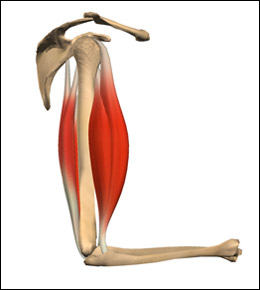Agonist and Antagonist MusclesThe "Six-Pack Syndrome" 
For every movable joint in the body, there are two opposing muscle groups: the agonist, which moves the segment of the body in one direction and the antagonist, which moves it in the opposite direction. For example, the biceps and the triceps muscles have opposing effects, one flexing and the other extending the arm. A good fitness program requires that the workout include exercises for both agonists and antagonists to achieve proper balance. This is not intuitive, and many adults who do exercise on a regular basis often do it improperly, excessively favoring a specific muscle group during their workout in order to acquire a desirable body feature. 
That's the case of the Six Pack Syndrome, a term that I use to describe the overuse of abdominal exercises through sit-ups, crunches, and specialized workout equipment in order to obtain a glamorous and sexy abdominal rectus muscle, the coveted "six-pack." Working the abdominal muscles without developing the corresponding posterior trunk muscles is a common and grave workout error, which may lead to back pain, excessive stooping, and an exaggerated forward curvature of the spine due to the ensuing muscle tone imbalance. By the way, it is next to impossible to produce a great "six-pack" through abdominal exercises alone; one must also trim down any excess body fat, including the kind that accumulates around the waist and obstructs the muscle in question from view. You don't believe me? Just look at any adolescent skinny boy with less than twelve percent body fat to verify the presence of an effortless "six-pack." |
Fitness & HealthGoing to the Gym Versus Home Exercises Agonist and Antagonist Muscles Risk factors in Osteoporosis #1 Risk factors in Osteoporosis #2 |